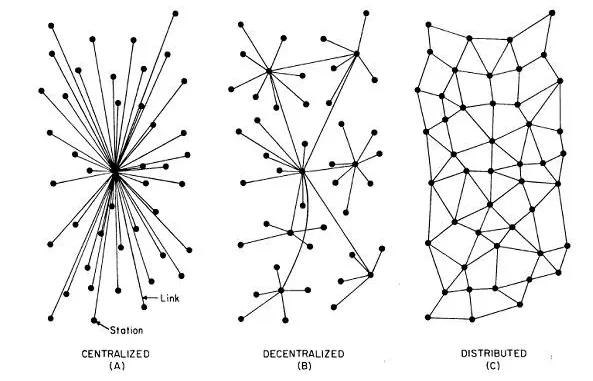Overview
Blockchain is a chain of blocks (duh). Each block contains a varying number of transactions.
A transaction contains:
- executed operations
- data of these operations
- sender
- receiver
- transaction fee
- timestamp
Transactions are peer-to-peer. No central entity looks over every transaction (like a bank). If I want to send money (or another asset), I can send it to them directly, without any intermediary. Transactions are also trackable and irreversible.
The chain is immutable, and the blocks are immutable. This is the main strength of blockchain. Once some transaction is registered, it stays there forever. Every block contains a has of the previous block (exception from this rule is the Genesis block - first block in the chain).
Blockchain is decentralized - every participant has the full copy of the blockchain.
Blockchain enables trust in a decentralized system of transacting peer participants. The purpose of blockchain is to verify and validate (or reject) transactions and then execute them and record the proof of these actions with the consensus of the peer participants.
Keywords
Decentralised vs Distributed

A decentralised system is a subset of a distributed system. The main difference comes down to where the decision is made and how the distribution of the decision is sent across various nodes in the system.
Decentralised means that a decision is made across various nodes. Each node decides its behaviour, which ultimately affects the system’s behaviour. This ensures that no single node has complete system information. The decision making is not restricted to a single node. The best example of a decentralised system is Bitcoin and Ethereum. Bitcoin has a decentralised network, where no government or entity has control over it. Ethereum offers a decentralised blockchain where anyone can publish dapps that connect users and providers directly.
In a distributed system, all parts of the system are located in different physical locations. The processing is spread across multiple nodes, but decision making can be centralised or decentralised. Various nodes can communicate and coordinate by passing messages. Distributed blockchain systems are more secure as the system is spread across various nodes. A great example of a distributed system is AWS or cloud instances. Instead of data being stored in one single point, it is spread across various points across the server. Even if one node fails in these networks, it will not affect the entire system.
Validation vs verification
Verification is about general rules. Validation is about application-specific rules.
Trust
Trust is a measure of confidence in the credibility of a peer participant in a system. In a blockchain, trust is established by verification and validation of participant data and transactions.
Integrity
In the blockchain context, integrity is about ensuring security and privacy of data and confidentiality of transactions.
In blockchain, participants are identified by an account number.
Bitcoin vs Ethereum
Bitcoin is just a currency. Its only application is a wallet. Ethereum (and some other blockchains) allow using blockchain technology for verification, validation and recording of transactions of other digital assets. Applications may be created on top of the Ethereum protocol (smart contracts).
All Bitcoin transactions are about sending value. Ethereum transaction embeds a function implemented by a smart contract.
Ethereum has a few networks. When deploying smart contracts they end up in one of these networks.
Accounts
All blockchain participants (including smart contracts) have an account number that uniquely identifies them. They are 160 bits (40 bytes) long. All accounts can hold a balance of ethers. Thus, there are two implicit attributes of an account: a number and a balance.
There are two kinds of accounts:
- externally owned accounts (EOA)
- smart contract accounts
They both can invoke smart contract function by sending a message. Such a message would contain: a sender and a value. The value is added to the balance held by the smart contract. The smart contract needs to have payable modifier (rule) to be eligible to receive funds.
Each account has a unique number (160 bits). That number is a result of hashing a public key from an asymmetric key pair of an account.
Transactions initiated from an account are signed with the private key of that account.
Networks
There are many Ethereum networks. The one with Network ID = 1 is the main network where real ETHs are being used. There are also test networks where mock ETH is used (like Ropsten). We can also set up local dev networks for testing.
Source Material
- The “Blockchain in Action” book by Bina Ramamurthy